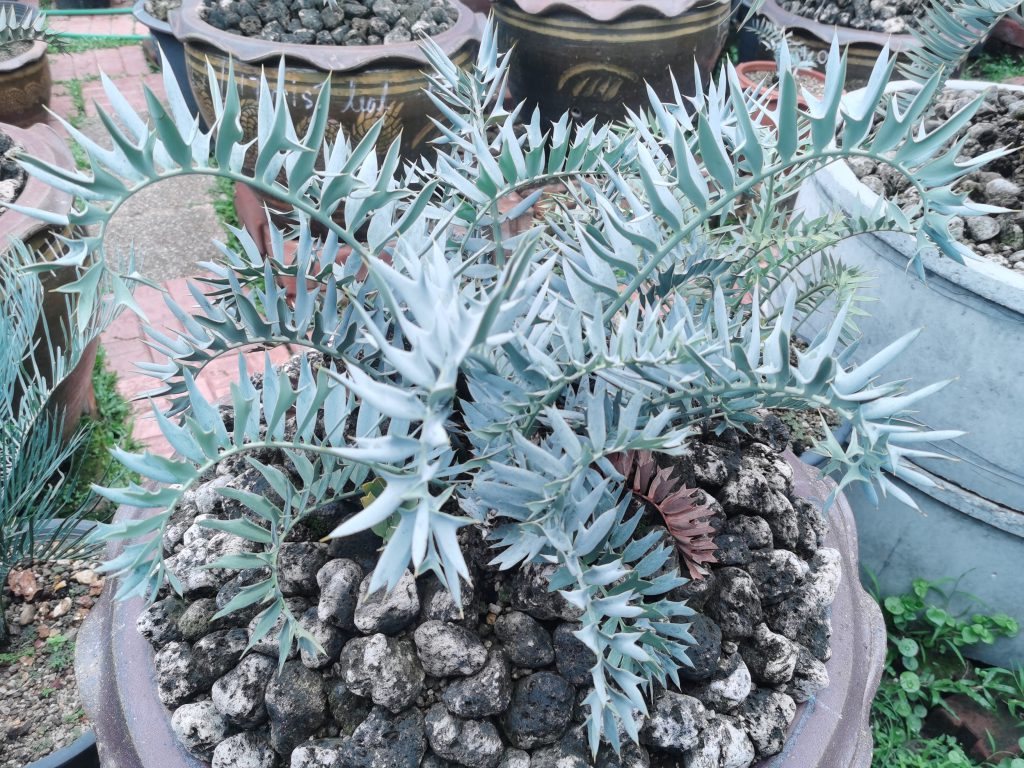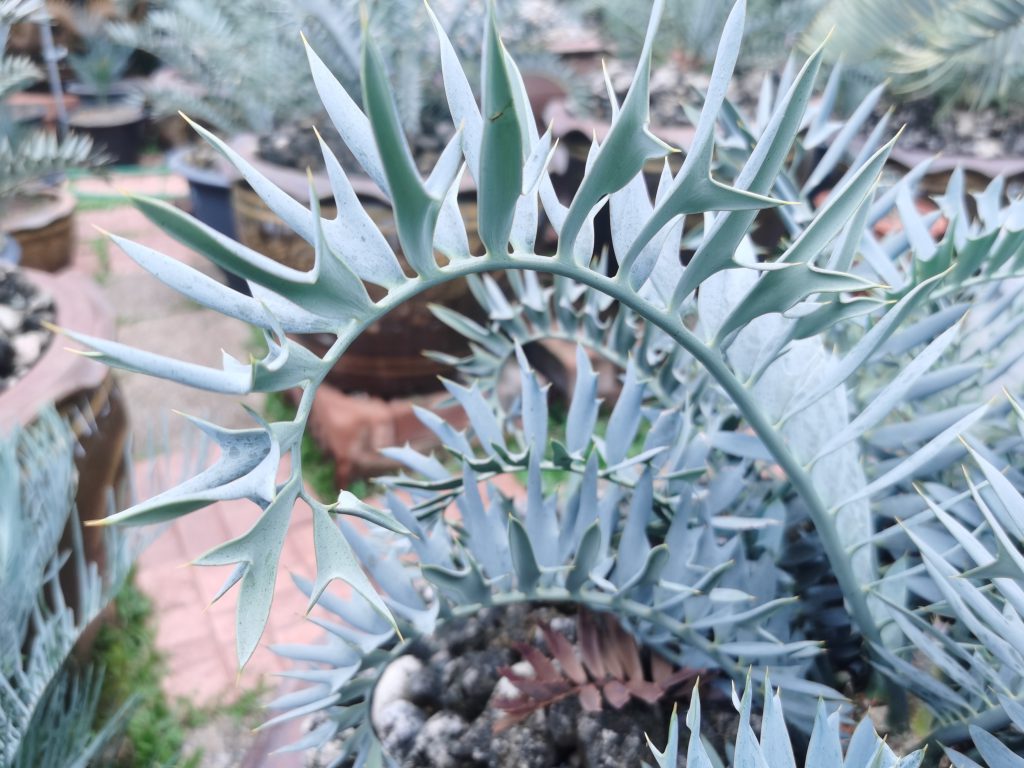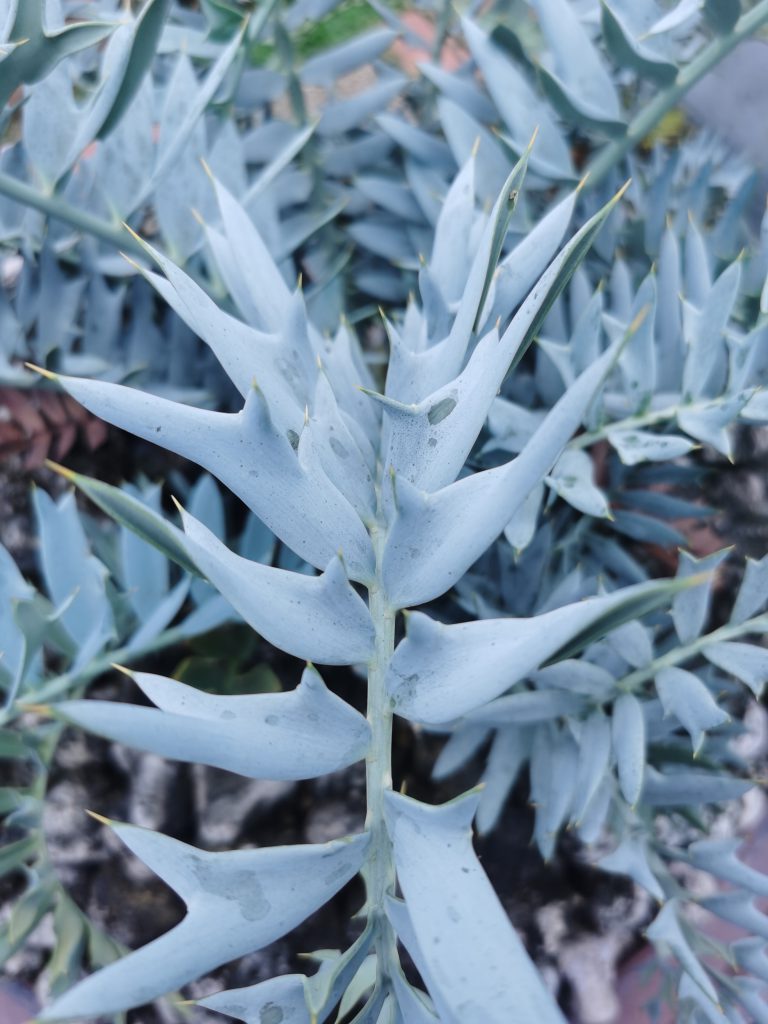ข้อมูล Encephalartos Horridus
Encephalartos Horridus (แปลมาจากหนังสือที่มาจาก South Africa) เป็นข้อมูลประกอบการเลี้ยงในไทย อุณหภูมิความร้อนในไทยมีผลต่อรูปแบบใบและขนาดต่างๆ
Redlist Encephalartos horridus

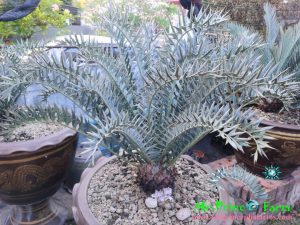
Encephalartos Horridus เป็นสายพันธุ์ที่โดดเด่นมากใน South Africa cycads ซึ่งเป็นที่รู้จักกันในศูนย์พฤษศาสตร์อนุรักษ์พันธุ์พืชกันมายาวนานกว่า 200 ปี มันมีใบหลายลักษณะที่ดึงดูดทุกคนผู้ซึ่งใครเห็นมันแล้วจะประทับใจผู้คน โดยเมื่อพบสายพันธุ์นี้เป็นครั้งแรก และทุกคนอยากรู้จักชื่อของมัน คนที่ค้นพบ E.horridus โดยศูนย์พฤษศาสตร์ค้นพบเมื่อ ค.ศ.1801 โดย N.J. Jacquin ในนาม Zamia horrida ทีแรกที่เมือง Vienna ประเทศออสเตรีย แต่ก็ถูกการเปลี่ยนแปลงเป็นชื่อในตระกูล Encephalartos ในช่วงปี ค.ศ.1834 โดย J.G.C. Lehmann ซึ่งมีความจำเป็นที่จะต้องมีการเปลี่ยนแปลงถึงคนตั้งชื่อได้อธิบายด้วย The Latin rules บุคคลที่ตั้งชื่อใช้คำศัพท์จากภาษา Latin ที่ว่า Dreadful หรือ Horridus และไม่ต้องสงสัยถึงความแหลมของใบในสายพันธุ์ชนิดนี้ เป็นสายพันธุ์ที่ตรึงตาผู้พบเห็น ที่มีความหมายแฝงในเชิงลบ โดย Charles Joseph chamberlain เห็นว่าพืชสายพันธุ์นี้มีชีวิตการอาศัยที่ Despatch ระหว่างที่ไปเที่ยวในปี ค.ศ.1912 เขียนไว้ว่า มันมีใบที่หน้ากลัวเหมาะสมให้มันใช้ชื่อนี้ดีอยู่แล้ว และเอาเป็นว่า “Encephalartos horridus เป็นชื่อที่ดีมาก” ในปี ค.ศ. 1965 Robert Allen Dyer ได้แบ่ง Encephalartos horridus โดยจำแนกสายพันธุ์ออกเป็น 2 สายพันธุ์คือ 1. Encephalartos Horridus original และ 2.Encephalartos trispinosus สิ่งที่ได้ในชื่อ Encephalartos trispinosus ที่เกิดขึ้นก่อนปี ค.ศ. 1965 ก็คือ Encephalartos horridus var. trispinosus และ Encephalartos horridus hybrid มีส่วนผสมกับสายพันธุ์ Encephalartos trispinosus ในส่วนเพิ่มเติมขึ้นมา
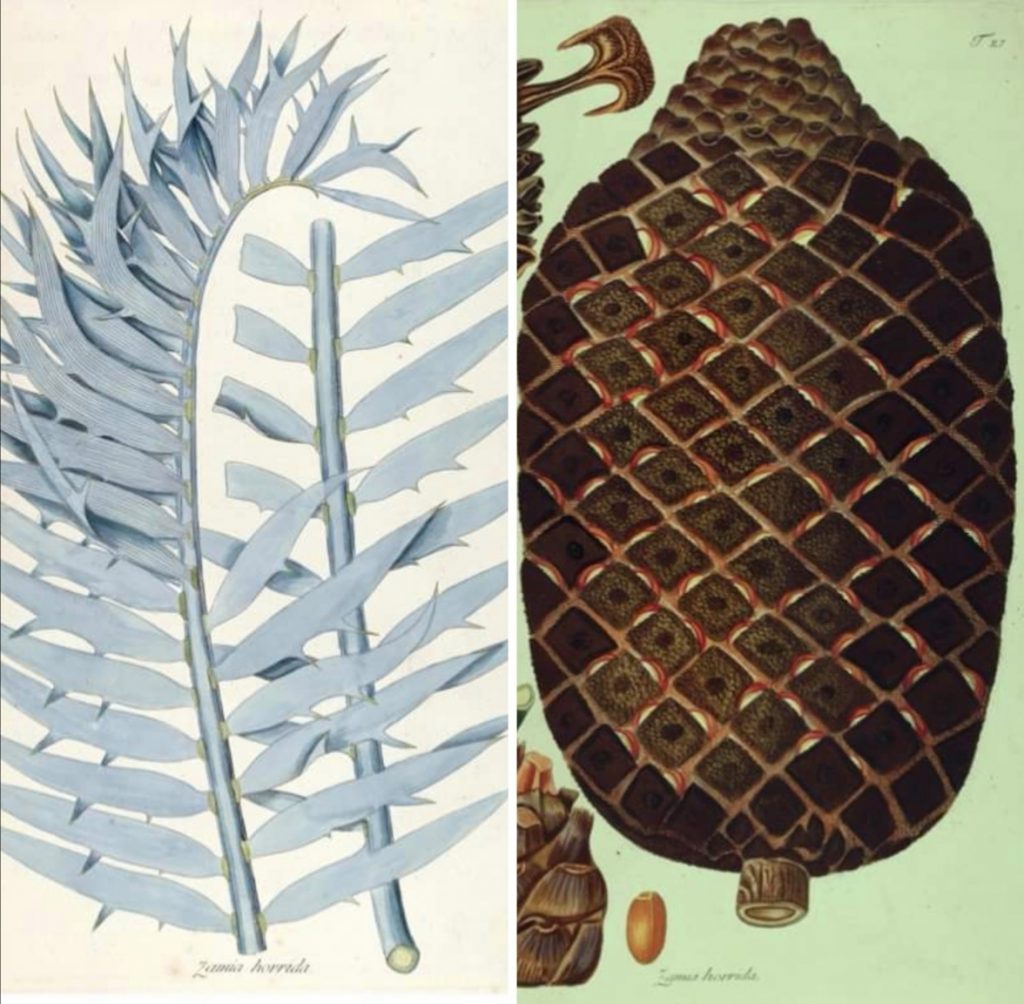
ซึ่งจากภาพที่ทาง jacquin’s Fragmenta Botanica of 1809 จะใช้ชื่อ Zamia horrida(ปัจจุบันคือชื่อ Encephalartos horridus) โดยจากรูปทางด้านซ้าย จะเป็น Encephalartos horridus var. trispinosus แต่ถ้าหลังปีค.ศ.1965 ในรูปจะเป็น Encephalartos trispinosus หรือ Encephalartos horridus hybrid (Encephalartos horridus cross Encephalartos trispinosus) ซึ่งยังไม่ได้จำแนกออกมา จนถึงปี ค.ศ.1965 Robert Allen Dyer เป็นคนแบ่งสายพันธุ์นี้ Encephalartos horridus และ Encephalartos trispinosus ออกจากันอย่างเด็ดขาด ส่วนรูปทางด้านขวาเป็นรูป cone เพศเมียของ Zamia horrida(Encephalartos horridus) ซึ่งเป็นสีน้ำตาลแดงถูกต้อง
Habitat : สายพันธุ์นี้จะเติบโตในเขต Uitenhage ของthe Eastern Cape เป็นสายพันธุ์ที่อาศัยอยู่ไม่สูงมากนัก และจะเกิดขึ้นที่ทางตะวันตกของ Port Elizabeth เป็นพื้นที่ทุ่งหญ้าทางตอนใต้ของ South africa มันเจริญเติบโตหลักอยู่บนหินในแสงแดดแบบ full sunlight เกิดบนหุบเขาหินและเนินความสูงมากกว่า 600เมตร อากาศร้อนจัดทนได้ถึง 35-40 องศา ปริมาณน้ำฝนประจำปีที่ตกในพื้นที่นี้ 250-600 มิลลิเมตรและตกตลอดทั้งปี โดย
Cultivation : ต้นไม้สายพันธุ์นี้จะเติบโตได้ช้าและมันสามารถทนสภาวะที่ความหนาวเป็นน้ำแข็งอย่างรุนแรงได้ และมันจะอ่อนแอในสภาวะที่เปียก โดยเฉพาะอย่างยิ่งถ้ามีการระบายน้ำที่ไม่ดีไม่เพียงพอ เป็นสายพันธุ์ที่ถ้ามีความชื้นมากอาจจะเน่าง่ายกว่าชนิดอื่น จึงต้องมีการระบายน้ำต้องดีเป็นพิเศษ มันจะเจริญเติบโตได้ดีและพัฒนาเป็นสีเทาภายใต้พลังงานแสง ถ้าเอาออกมาเจอกับแสงแดดทั้งวัน มันสามารถขยายพันธุ์ได้ทางหลายหน่อและเมล็ด
ลำต้น(stem) ลำต้นหลักจะสูงขึ้นไปในอากาศ ตั้งตรง และไม่มีกิ่งก้านสาขา สามารถมีหน่อจำนวนมาก แต่หน่อก็ไม่สามารถสาเหตุมีหลายลำต้นขึ้นไปจะมีแค่ลำต้นเดียว ลำต้นสามารถยาวได้ถึง 1.1 เมตร ของความยาวส่วนใหญ่ โดย 0.7 เมตรจะสูงเหนือพื้นดิน และส่วนที่เหลือจะอยู่ใต้พื้นดิน ลำต้นสามารถมีขนาดเส้นผ่านศูนย์กลาง 300 มิลลิเมตรในเส้นผ่านศูนย์กลาง และปลายยอดลำต้นของมันจะปกคลุมด้วยหนามแข็งๆของ Cataphylls
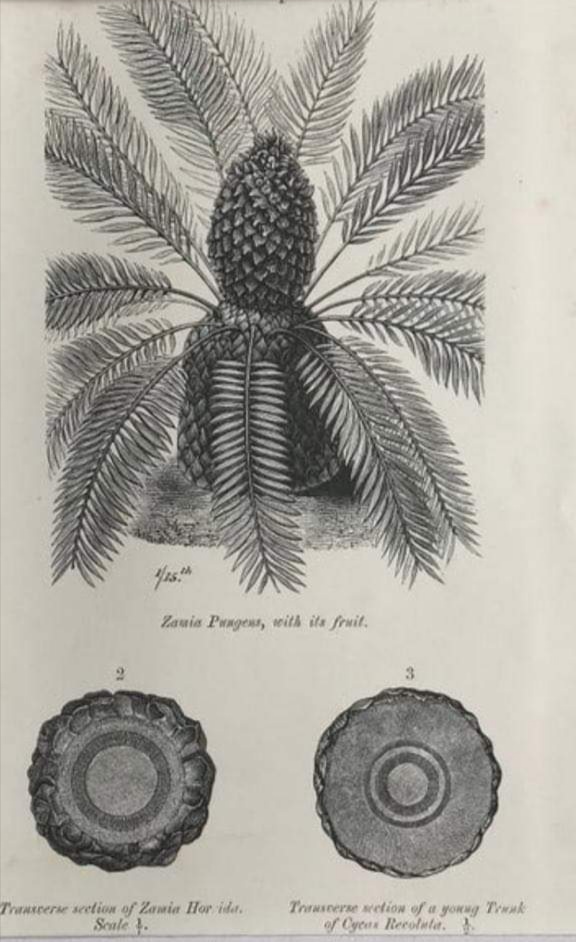
ใบย่อยทั้งหมด จุดเริ่มต้นของสีน้ำเงินอมเทา( Silver-blue) ในใบใหม่แล้วเป็น Dark green หรือ (greyish green) ในใบเก่า บนด้านหน้าใบซึ่งโดยทั่วไปจะเปลี่ยนจากสีเขียวแก่ไปจนมี Wax ปกคลุมในชั้นผิวด้านบนของใบ ด้านหลังของใบจะเป็นสีเขียวที่อ่อนกว่าและปกคลุมด้วย waxที่น้อยกว่า ในส่วนช่วงใบที่ฐานล่างจะตรง แต่ว่าส่วนที่สำคัญจะมีการโค้งเป็นแบบ strong downwards and inwards คล้ายคลึงกับ เมื่อมองการงอของสปริงในบางกรณีเลยทีเดียว
สำหรับ Robusta form ก้านใบย่อยทั้งหมดจะแข็งและมีความยาว 0.6-1.0 เมตร มีความกว้าง 10-15 cm the median leaflet ความยาวของใบย่อยจะมากกว่า 10 cm และความกว้างจะมากกว่า 2.5 cm ด้วยขอบปลายใบที่แหลมคม มีหนามขนาดใหญ่ที่เรียกว่า lobes อยู่ระหว่าง 2-3 lobes และ lobes ก็ไม่ได้อยู่ในระนาบเดียวกัน ความยาว Petiole 12-22 cm ปราศจาก spines หรือ lobes spines ส่วน the basal จะมีลักษณะเด่นคือ มีสี red brown ที่ collar ส่วน dwarf form จะมีหน่อเกิดขึ้นจำนวนมาก(cluster) และก้านที่สั้น วัดจาก stem มีความยาว 25-30 cm ใบก็มีลักษณะสั้นกว่า Robusta form ที่มาจาก Uitenhage โดย dwarf form จะออก cone แค่อันเดียวและขนาดไม่ใหญ่ด้วย
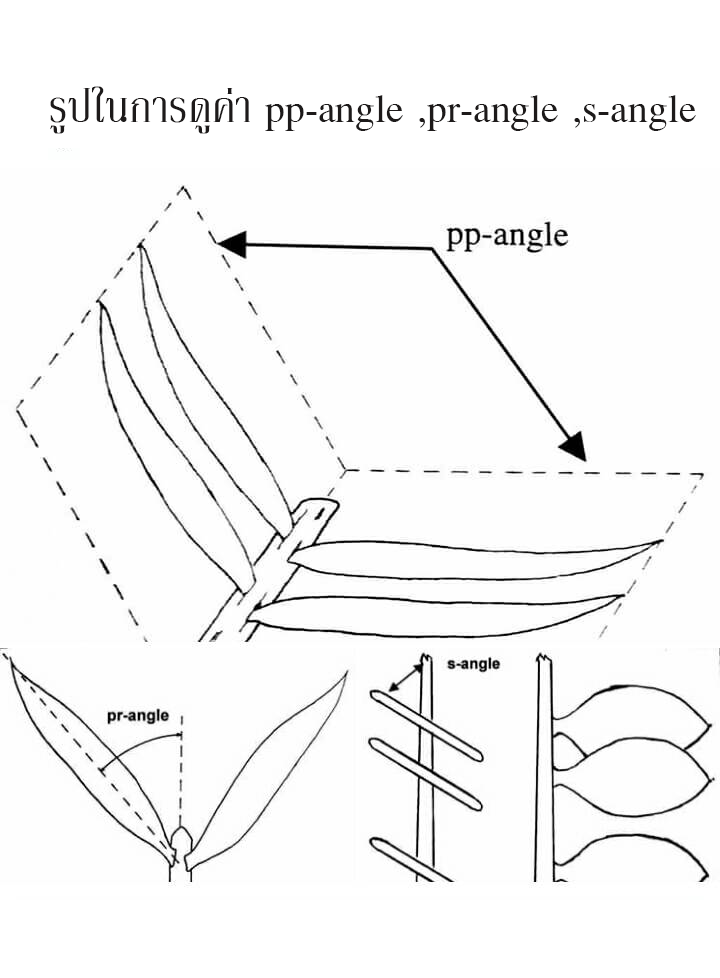
The pp-angle มีค่าเพิ่มจาก 10°-40° ใบยอดไปทางปลายก้านใบ ไปจนถึง 130°-170°ใบล่างที่ลงสู่โคนก้านใบไปทาง petiole
The pr-angle มีค่าเพิ่มจาก 50°-90° ใบยอดไปทางปลายก้านใบ ไปจนถึง 80°-90°ใบล่างที่ลงสู่โคนก้านใบไปทาง petiole
The s-angle มีค่าเพิ่มจาก +10°ถึง +90° ใบยอดไปทางปลายก้านใบและเปลี่ยนกลับมาเป็น -20°ถึง -40°ใบล่างที่ลงสู่โคนก้านใบไปทาง petiole
ใบย่อยจะไม่มีใบใดใบหนึ่งที่ทับซ้อนกัน แต่หนามตรงที่ Lobes บางครั้งอาจจะมีการทับซ้อนของ Lobes เป็นล่างทับบนได้(incubously)ที่ปลายใบ
Petiole : ความยาว 120-220 มิลลิเมตร และฐานจะมี Collar สีน้ำตาลแดงเด่นชัด
Median leaflets : ความยาว 100 มิลลิเมตร และกว้าง 25-30 มิลลิเมตร ใบทั้งหมดจะมีความหนาและปราศจากปุ่มเล็กๆที่อยู่บนผิวใบ ใบย่อยทั้งหมดจะมี 1-3 หนามแหลมๆลักษณะเป็นแบบ Lobes ซึ่งทิศทางการชี้ออกไปจะไปในทิศทางที่แตกต่างกัน บนผิวใบของใบย่อยทั้งหมดจะมีการห่อแบบเรือเล็กน้อยสำหรับตามแนวขวางของใบย่อยตรงบริเวณขอบใบจะมีการม้วน ในแนวยาวใบย่อยทั่วไปจะมีลักษณะตรงหรืออาจจะมีการห่อตัวบนผิวใบเล็กน้อย ช่วงที่ Encephalartos Horridus แตกใบใหม่ ใบอ่อนใหม่มีตั้งแต่ สีเขียวอมน้ำตาล จนไปถึง สีน้ำตาลแดง
Basal Leaflets : ใบในส่วนนี้จะเป็นแบบ lobeless และลดขนาดจนถึง 1 ใบย่อยเล็กๆๆที่เรียกว่า (spine) บางทีอาจจะมากกว่า 1 ใบย่อยเล็ก
Cones : ปรากฎในช่วงระหว่าง ธันวาคมถึงมกราคม
Male cones : เริ่มต้นเป็นสีน้ำตาลแดงจนกระทั่งชั้นที่บางของขนที่สั้นๆ แต่ว่าหลังจากนั้นจะกลับมาเป็นสีน้ำตาลเขียวสว่างขึ้น จะมี 1 หรือ 2 conesต่อฤดูต่อต้น ทั้งหมดจะมีความยาว 400-480 มิลลิเมตร เส้นผ่านศูนย์กลาง 60-120 มิลลิเมตร และมี a peduncle 60-100 มิลลิเมตร a cone มีน้ำหนักสดประมาณ 0.5-1.8 กิโลกรัม และ 230-360 sporophylls Pollen shedding จะเกิดขึ้นในช่วงเดือน กุมภาพันภ์ ถึงพฤษภาคม
Female cones : จะมีสีเขียวสว่าง มีชั้นน้ำตาลแดงที่ร่องกำหนดโดยชั้นบางๆของขนที่สั้น แต่ว่าหลังจากนั้นจะกลับมาเป็นสีเขียวเข้มขึ้น ในบางกรณี Cones อาจเป็นสีเขียวหรือสีน้ำตาลปนเหลืองตั้งแต่ต้นจนจบเลยก็ได้ โดย 1 Cone สามารถผลิตได้ต่อฤดูต่อต้น มันจะมีความยาว 460-510 มิลลิเมตร เส้นผ่านศูนย์กลาง 150-200 มิลลิเมตร และ peduncle 70-75 มิลลิเมตร A cone ที่เพิ่งตัดมาสดๆจะมีน้ำหนัก 5.0-8.5 kg และ 200-300 sporophyllsของปลายยอดหนึ่งจะมีเกสรตัวเมียที่ไม่ได้รับการผสม 13%ของทั้งหมด cones จะมีการเปลี่ยนไปเป็น spontaneously ระหว่าง กันยายน-ธันวาคม มี 195-480 omnules
Seeds: สีแดง ความยาว 35-45 มิลลิเมตรและมีเส้นผ่านศูนย์กลาง 20-25 มิลลิเมตร The sarcotesta จะมีแค่ 35% และ The sarcotestaจะเปลี่ยนเป็น mucilaginous เมล็ดก็จะสุก
Seed Kernels : จะมีความยาว 25-31 มิลลิเมตร เส้นผ่านศูนย์กลาง 20-22 มิลลิเมตร และผิวเรียบมีลายเส้นตามยาว 10-12 เส้น
Note
Encephalartos Horridus เป็นต้นไม้ขนาดเล็ก
มี 2 Form
- “Original form” หรือบางทีเค้าเรียก Robusta form และหลายๆลักษณะ จะอยู่เขต Uitenhuge
- “Dwarf form” หรือ “Port Elizabeth form” จะมีลำต้นและใบที่สั้น จะอยู่ในเขต The Port Elizabeth
โดย 2 Form หลักจะแยกย่อยออกเป็น Form ย่อยๆได้คือ
1. แบบใบม้วนเป็นหลอดปลายเป็นเข็ม( needle lobes form )
2. แบบใบที่มีความยาวหนามสมมาตรทุกหนาม( symmetry lobes form )
3. แบบหนามบิด( twist leaves form)
4. แบบใบย่อยมีหนามจำนวนมาก ( a lot of thorn form)
5. แบบใบแนว Arenarius (Encephalartos Arenarius form )
6. แบบใบย่อยทับซ้อนชิด (Compact leaves form) https://youtu.be/rFs0IXw89y0
7. แบบใบย่อยแนวผีเสื้อ( butterfly form)
8. แบบใบย่อยแนวตะกร้าสาน( weave Basket form)
9. แบบปลายก้านใบหางหมู( pig tail form)
10. แบบก้านใบยาว (long leaves form)
11. แบบก้านสั้น ความยาวก้าน 35 cm-45 cm ( dwarf leaves form)
12. แบบก้านสั้นมาก ความยาวก้าน 20 cm-35 cm (super dwarf form)
13. แบบใบย่อยแปลก (mutant form)
14. แบบใบย่อยด่าง (variegated form)
15. แบบใบย่อยหนามน้อย ( few of thorn form)
16. แบบปลายก้านใบแนวลูกศร (arrow form)
17. แบบใบแนวโครงกระดูกปีศาจ (devil skeleton form)
18. แบบใบย่อยแนวเขาควาย(buffalo horn form)
19. แบบใบแนว Encephalartos trispinosus (Encephalartos horridus Var. trispinosa.)
ความแตกต่างที่อย่างไรก็ตาม
E. horridus มีความสัมพันธุ์อย่างใกล้ชิดกับ E. trispinosus สายพันธุ์นี้มีหลายอย่างที่แตกต่างกันจาก E. horridus in 1965. ก่อนที่จะรู้จัก E. horridus var. trispinosa. ซึ่งบาง formของ E. trispinosus เป็นสายพันธุ์เดียวเท่านั้นที่มีการสับสนกับ E.horridus ด้วยข้อยกเว้นที่ว่า มันสามารถพิจารณาจากสายพันธุ์ได้ แม้ว่าจะไม่เห็น Cones ตามข้อแตกต่างที่เกิดขึ้นระหว่าง E. horridus and E. trispinosus
E.horridus ที่เกิดขึ้นเท่านั้นที่ตำบล the Port Elizabeth และ Uitenhage และบริเวณรอบๆ ไม่มีการทับซ้อนพื้นที่กับ E.trisprinosus ที่ซึ่งเกิดขึ้นทางทิศตะวันออกใน the Bushmens และ Fish River Valleys
- The median leafletsของ E.horridus จะกว้างและมีการบิดของชองหนามที่เรียกว่า lobs บนผิวด้านล่างของใบย่อยทั้งหมดจะมากกว่าและมากกว่ารูปแบบธรรมดาใน E.trisprinosus ที่ซึ่ง lobes จะไม่ธรรมดา ความพิเศษในส่วนของด้านล่างของใบที่ซึ่งใบย่อยปกติจะไม่มีหนามขอบใบ ใบย่อยทั้งหมดของ E.trisprinosus จะชัดเจนใน lobes ที่จะชี้ขึ้นทางด้านบนผิวเท่านั้น
- สีใบของใบอ่อนของ E.horridus จะเป็นสีน้ำเงินอมเทาเข้ม แต่บริเวณของใบE.trisprinosus จะสีฟ้าและเขียวน้อยกว่าในรูปแบบเดียวกัน
- The cones of E. horridus เป็นสี brownish-red ขณะที่ E. trispinosus จะเป็นสี yellow, greenish-yellow หรือ bluish-green.
- The female cone scales of E. horridus จะค่อนข้างเรียบและเต็มไปด้วยเส้นมากมาย ขณะที่ The female cone scales of E. trispinosus ผิวจะมีความหยาบมากและเป็นเม็ดตะปุ่มตะป่ำ
- ในตำบล The Uitenhage จะมี E.horridus เกิดขึ้นรวมถึง E.longifolius และหลายสายพันธุ์ Hybrids ได้มีการพบเกิดขึ้นเช่นกัน ลักษณะที่เกิดขึ้นทั้งสองชนิดในบริเวณนี้จะเป็นเหมือนลักษณะกลางๆที่เกิดขึ้นในการเป็น Hybridsของสองชนิดนี้ ใบย่อยจะมีช่วงจากไม่มีหนามจนถึงหนามที่เป็น lobed จะลึก ในหลายกรณี ในกรณีที่สีออกมาทางด้านเขียวแสดงว่าได้สายพันธุ์ Encephalartos longifolius มามากกว่า ขณะที่ถ้าสีของ Cone มีแนวโน้มที่จะออกไปทาง E.horridus ใบอ่อนทั้งหมดของE.horridus จะมีสี Silver blue ขณะที่ใบของ E.trisprinosusจะได้สี Blue ที่น้อยกว่าและบางทีอาจจะเป็นสีเขียวได้ในบางฟอร์ม Coneทั้งหลายของ E.horridus จะเป็นสีน้ำตาลแดงขณะที่ E.trispinosus จะเป็นสี yellow, greenish-yellow or blue-green. มีการรายงานอย่างไม่เป็นทางการของ hybrids ระหว่าง E. horridus and E. lehmannii ในตำบล the Uitenhage เกิดขึ้นด้วยเช่นกัน
- E. horridus อาจจะมีความอุดมสมบูรณ์มากจนกระทั่งถึงปัจจุบัน ไม่กี่ปีที่ผ่านมามันอาจจะเห็นพืชสายพันธุ์นี้เห็นอยู่ระหว่างทางถนนรอบๆ Uitenhage จำนวนนักสะสมอันมากมายสะสมอยู่ในสวนใน Uitenhage,Despatch และ Port Elizabeth และความจริงที่ว่ามันจะดีมากๆที่จะมีตัวแทนในการสะสมในส่วนที่เหลือของ South Africa และ ต่างประเทศ มันชี้ออย่างเห็นได้ชัดว่าในวันนี้ของความอุดมสมบูรณ์ในธรรมชาติกำลังจะเป็นอดีตเพราะตอนนี้น่าจะใกล้สูญพันธุ์เลย สายพันธุ์นี้จำนวนกลุ่มน้อยจะถูกปกป้องใน the Springs Nature Reserve ใกล้ Uitenhage แม้ว่า E. horridus จะถูกประกาศว่าเป็นสายพันธุ์นี้ที่กำลังจะสูญพันธุ์และจะไม่สามารถนำมันออกจากที่อาศัยอยู่ในธรรมชาติ ถ้าไม่มีใบอนุญาติ ที่เห็นเมล็ดอยู่มีจำนวนน้อยมากๆในการอาศัยอยู่ในธรรมชาติ เมล็ดเกือบจะทั้งหมดที่ปรากฎอยู่จะถูกรบกวนด้วยตัวด้วง สถานภาพของการผลิตสายพันธุ์ E.horridus ในธรรมชาติ ดังนั้นดูเหมือนจะเป็นเรื่องที่ไม่แน่นอนในอนาคต
- ในการกระจายตัวของสายพันธุ์บริเวณนี้มีบางส่วนที่มีการทับซ้อนกัน คือ Encephalartos lehmannii กับ Encephalartos longifolius และบางทีนำไปสู่การการผสม(hybridisation) โดยเฉพาะ Encephalartos lehmannii
- ถ้าไม่พิจารณา Conesของ Encephalartos horridus สามารถสับสนได้อย่างง่ายกับฟอร์มต่างๆของ Encephalartos trisprinosus และบางฟอร์มของ Encephalartos arenarius blue form. ใน Encephalartos horridus Lobes ของใบเป็นสิ่งสำคัญ อย่างไรก็ตามการบิดในใบเป็นจำนวนมากและขอบใบที่โค้งลงจะดูแข็งๆมากกว่าทาง Encephalartos trisprinosus และ Encephalartos arenarius blue form แต่ทว่าผิวบนใบของ Encephalartos horridus การโค้งนูนของใบย่อยหรือจะห่อในทางกลับกัน กับอีก 2 สายพันธุ์ในส่วนทาง Encephalartos trisprinosus และ Encephalartos arenarius blue form จะห่อใบเป็นแบบ concave
- นักพฤกษศาสตร์ที่สะสมปรงจำนวนน้อยจะรู้จักดีในใบย่อยทั้งหมดที่ชี้ชัดว่ามันคือ Encephalartos horridus ยกเว้นว่าพวกมันที่มีสีใบเป็นสีเขียวแก่ตอนเริ่มต้น เพราะว่ามันจะถูกเรียกว่ากลุ่มเฉพาะที่คนไม่ปกติเท่านั้นที่จะสะสม โดยมันอาจเป็นได้ว่ามันคือ mutant form
English language
Encephalartos horridus
Encephalartos horridus is a very distinctive South African cycad which has been known to botanists for almost 200 years. Its very characteristic leaves always make an impression on people who see it for the first time, as is evident from its name. It is not known who discovered E. horridus, botanically speaking, or when it happened but by 1801 at least one plant was growing in Vienna and in this year it was described, illustrated and named by Jacquin, who called it Zamia horrida. In 1834, when he introduced the genus name, Encephalartos, Lehmann changed the name to Encephalartos horridus. This species name is unique amongst South African cycads in that it is the only one with a negative connotation. Charles Joseph Chamberlain, who saw plants in habitat at Despatch during a visit in 1912, wrote: “It’s terrible leaves give it a clear title to its name” and concluded that “Encephalartos horridus is well named”.
summary
1801 :N.J.Jacquin was decribed as Zamia horrida
1834 : J.G.C. Lehmann was transferred genus Encephalartos ,which neccessitated a gender change to the epithet to comply with the latin rule.
1912, wrote: “It’s terrible leaves give it a clear title to its name” and concluded that “Encephalartos horridus is well named”.
the epithet is derived from a latin word for “dreadful” or “horrible” and undoubtedly refers to the spininess of the plant’s leaves
explain
Encephalartos horridus is one of the most beautiful and unusual of all the Encephalartos. The intense blue of its foliage is unique and is not equalled by any other blue-leafed cycad.
two clear forms of Encephalartos horridus can be easily distinguished:
1.A dwarf which grows on the hills near Port Elizabeth and the more robust, handsome form from the Uitenhage district. The only differences between the two forms lies in the stem and leaf size. The Port Elizabeth plants are dwarf like with stems that rarely exceed 30 cm. The leaves recurve creating a tangled mass of thorny foliage.
2. The Uitenhage form of Encephalartos horridus is generally considered to be more typical of the species. This robust form produces stems of up to one metre tall with long recurving leaves ending with a distinctive curl at the tip of leaf
Habitat
The species greows in the Uitenhage district of the Eastern Cape, in the thorny mixed scrub and also occurs west of Port Elizabeth in sourveld areas,Karoo scrub,including the addo and Uitenhage bush, all quite dry.It grows mainly on rocky ridges in full sunlight.The annual rainfall for the areas is 250-650 mm and falls throughout the year.The climate is temperature with frost rare in winter, and temperatures may reach than 40°C(104°F) in summer
Cultivation
The plants grow slowly and is frost hardy. It is very susceptible to rotting under wet conditions, especially if the drainage is inadequate. It thrives best and developes its grey colour to fullest potential if exposed to full sunlight. It is readily propagated from seed and sucker
Distribution
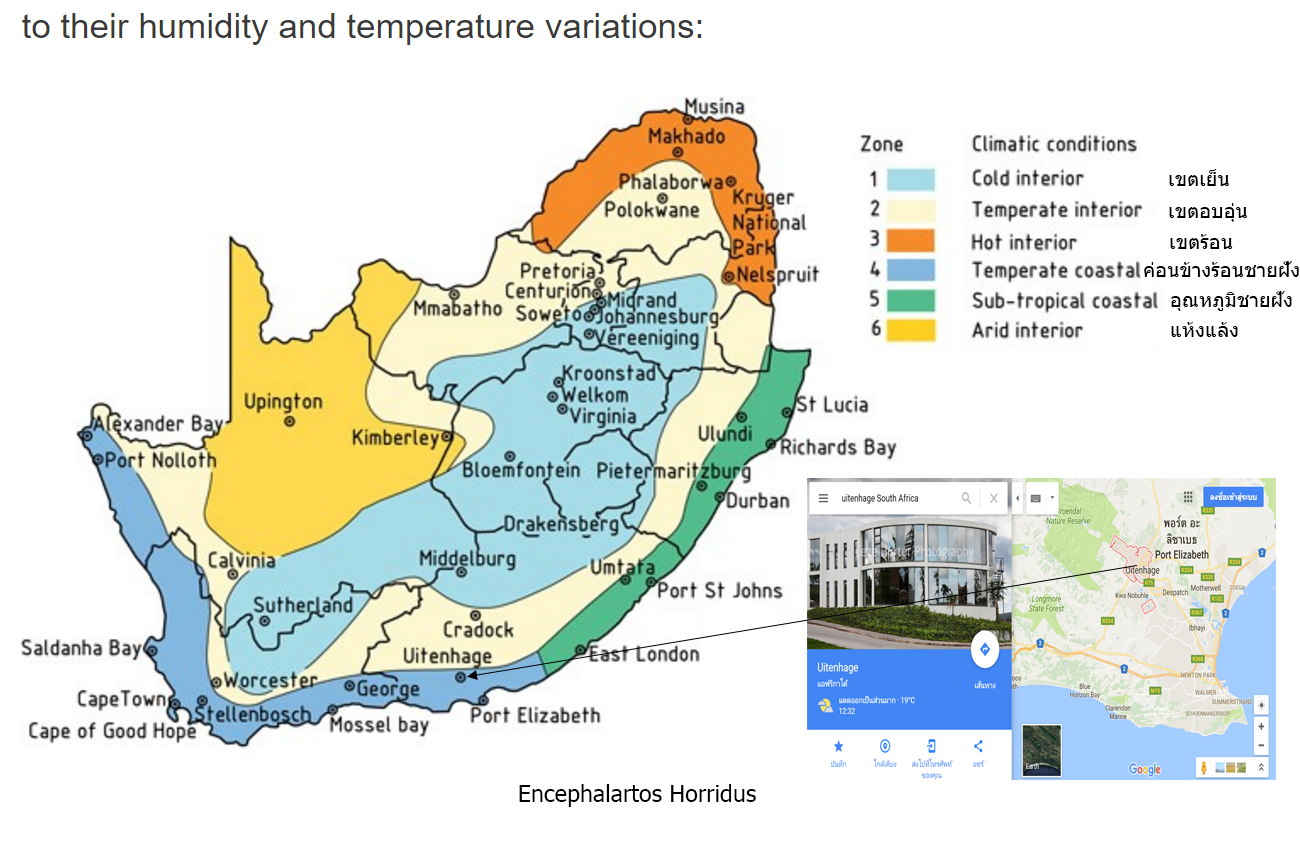
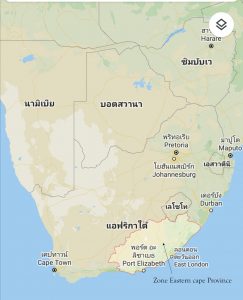
South africa ,East Cape Province,Port Elizabeth and Uitenhage district
It prefers full sunlight and persists in a range of habitats including Karoo scrub, sourveld, deep fertile soil and open rocky ridges.
Eastern Cape blue cycads are now available as a result of commercial distribution in nurseries and gardens throughout the world.
It also makes an ideal potted plant for a sunny location. Its culture and usage in the landscape.
CULTURE AND GROWTH OF ENCEPHALARTOS HORRIDUS
Soil: Like many other types of cycads, E. horridus like a good draining soil. What this means is that the water given to the plant needs to pass through the growing medium fairly quickly. If you are making your own potting mix, this can be accomplished by adding coarse sand,red earth,laterite,Akadama soil ,Kiriga ,Aqua Clay,pumice, scoria, good caliper decomposed granite, very fine rocks, or other coarse material,charcoal. Things such as fine leaf mold, very fine sand, clay-like topsoil or decomposed organic materials tend to slow the passage of water and retain moisture. With a good mix, when you water a containerized plant, you should see water trickling out the bottom of the pot in a matter of seconds.
In terms of the best soil type in the garden, the same principals apply. E. horridus likes good drainage.You should test the water drops on the ground You can actually dig a hole in the garden and fill it with water. You prefer that this water disappears in a matter of 10 minute to twenty minute. If it persists for more than 2 hours, you’re going to have problems growing this species unless you change things.but if the ground is absorbing so bad through the water, you should plug the water down to drain the bottom
Stem
Stem: Mainly aerial, erect and unbranched although suckering freely, often causing the plant to develop into a multi-stemmed clump. Encephalartos horridus sucker from the base and may also produce branches along the length of stem. The stem can attain a length of 1.1-1.5 m, of which at most 0.3-0.8 m will be above ground due to the action of contractile roots. The stem can be up to 25- 30 cm in diameter and its apex is covered by hard pungent cataphylls
leaves

Initial new leaves have brown,dark brown,light brown,red-brown,silver brown,violet brown,orange colour change a silver-blue on the upper side which gradually changes to dark green as the outer wax layer wears off. The lower side of the leaf is lighter green with leass wax. The basal part of the leaf is straight, but the terminal part curves strongly downwards and inwards to resemble a coiled watch spring in some cases.The leaves are stiff and long 0.6-1.0 m. the pp-angle increases from 10°to40° at the leaf apex to 130° to 170° at the blade’s base. The pp-angle increases form 10°-40° at the leaf apex to 130° to 170° at the blade ‘s base.The pr-angle increases from 50° to 90° at the leaf apex to 80° to 90° at the blade’s base. The s-angle is +10° to +40° at the leaf apex and change to become -20° to -40° at the blade’s base. Leaflets do not shield one another but their lobs do sometimes shield one another incubously at the leaf apex.
petiole :long 120-200 mm and the base has a pronounced reddish brown collar.
Mediun leaflets : long 100 mm and wide 25-30 mm. they are hard and without nodules. the leaflets have 1-3 pungent lobes which point in different directions. the upper surface of the leaflets in convex transversely with the leaflet margins rolled inwards. Longitudinally. the leaflts are generally straight or slightly concave on the upper side.
Basal leaflets : These are lobeless and decrease in size to a single spine at most
Cone
These appear during December-January. (at south africa)
Male Cones : Reddish brown initially due to a thin layer of short hairs, but later becoming more greenish brown. one or two cones are produced per season per stem. They are 400-480 mm long, 60-120 mm in diameter and have a peduncle 60-100 mm long. A cone has a fresh mass of 0.5-1.8 kg and 230-360 sporophyllys. Pollen shedding takes place during February-May.
Female cones: These are mostly greenish red-brown due to a thin layer of short hairs, but later becoming greener.In some cases the cones the cones are either green or Khaki-coloured throughout. Only one cone is produced per season per stem.It is typically long 460-510 mm, diameter 150-200 mm and with a peduncle long 70-75 mm. A cone has a fresh mass of 5.0-8.5 kg and 200-300 sporophylls of which the apical sterile ones comprise about 13% of the total. The cones disintegrete spontancous during September-December to yeild 195-480 omnules.
Seeds : Red, long 35-45 mm and Diameter 20-25 mm.The sarcotesta index is about 35% and the sarcotesta becomes mucilaginous on ripening.
Seed kernels: long 25-31 mm. diameter 20-22 mm. and smooth with 10-12 longitudinal line
Note (reference Nat Grobbelaar book P.203-206)
2 form of the species are sometimes postulated
- the “originary” Uitenhage form
- the “dwarf” Port Elizabeth from with shorter stem and shorter leaves.
The differences are. however, apparently due to differences in the two habitats because they disappear when plants form
https://www.iucnredlist.org/species/41905/10587904
Description
reference http://www.cycadsociety.org/horridus/horridus.html
reference Nat Grobbelaar book P.203-206
reference https://www.junglemusic.net/Encephalartos_horridus/Encephalartos_horridus_article/encephalartos_horridus.html
reference Donaldson, J.S. 2010. Encephalartos horridus. The IUCN Red List of Threatened Species 2010
-
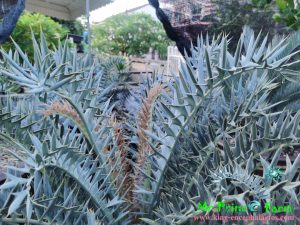
Encephalartos horridus 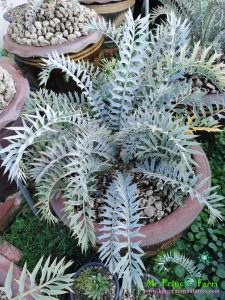
Encephalartos horridus
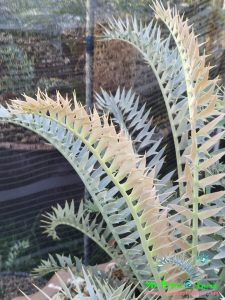
Encephalartos horridus
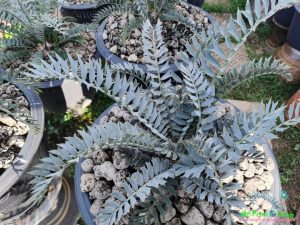
Encephalartos horridus
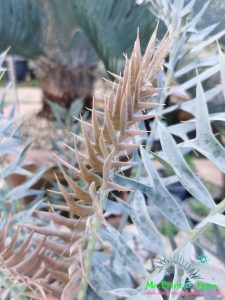
Encephalartos horridus
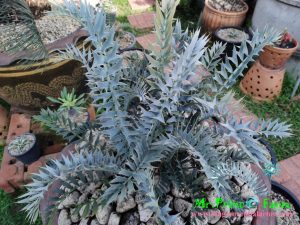
Encephalartos horridus
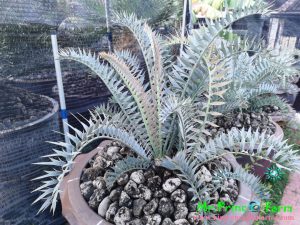
Encephalartos horridus
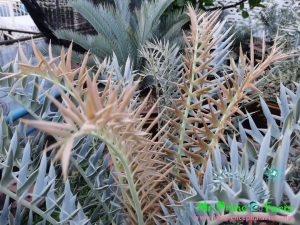
Encephalartos horridus
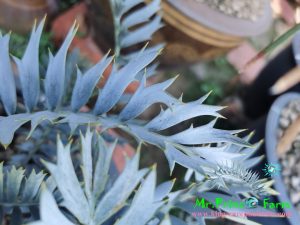
Encephalartos horridus
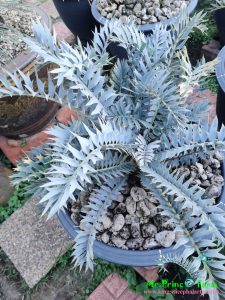
Encephalartos horridus
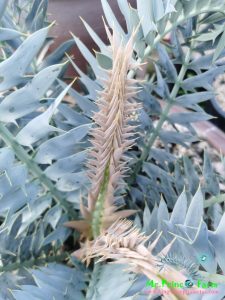
Encephalartos horridus
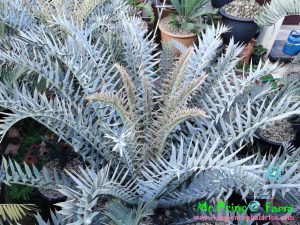
Encephalartos horridus
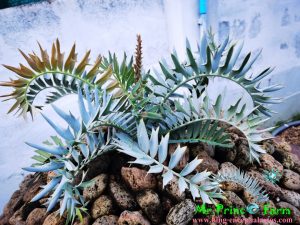
Encephalartos horridus
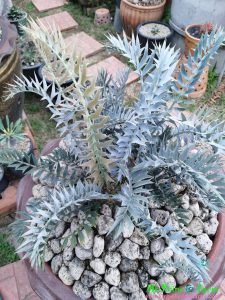
Encephalartos horridus
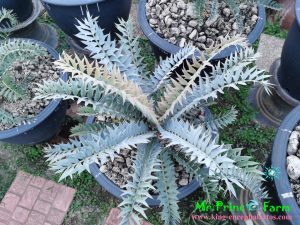
Encephalartos horridus
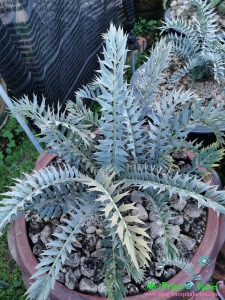
Encephalartos horridus
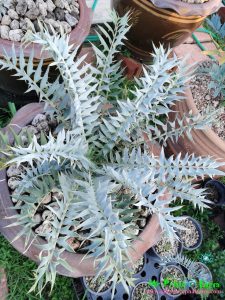
Encephalartos horridus
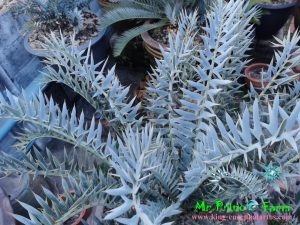
Encephalartos horridus

Encephalartos horridus
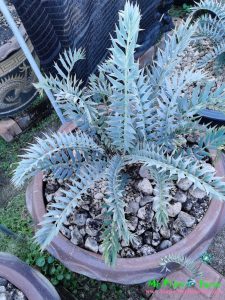
Encephalartos horridus
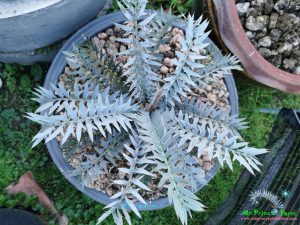
Encephalartos horridus
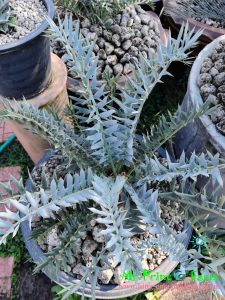
Encephalartos horridus
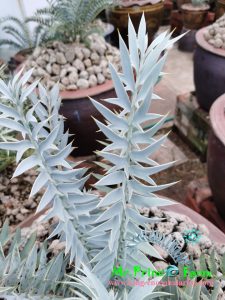
Encephalartos horridus
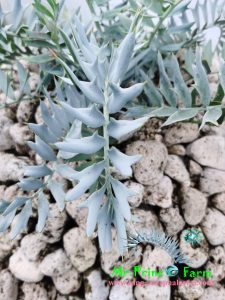
Encephalartos horridus
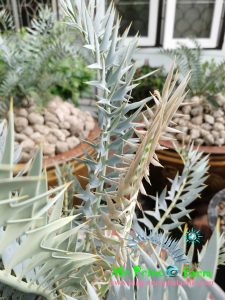
Encephalartos horridus

